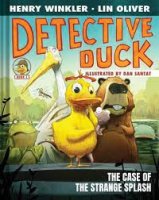As a boy, to-the-hacienda-born Diego de La Vega, son of the Alcalde of Los Angeles in early 19th century Spanish California, was injured and saved by a fox. His Native American grandmother foreshadowed his future: ' "That zorro is your totemic animal, your spiritual guide...You must cultivate its skill, its cleverness, its intelligence. Your mother is the moon, and your home…the cave. Like the fox...you will disguise yourself...." '
The pulp writer, Johnston McCulley, introduced readers to Zorro in 1919 in a five-part-serial titled The Curse of Capistrano. Douglas Fairbanks, the movie actor, read it. In 1920 his movie The Mark of Zorro appeared and became a blockbuster. With further pulp novels, movies, and Walt Disney, Zorro, like Tarzan, Dracula, and Sherlock Holmes, became and remains part of the popular culture. He is recognized world wide and his appeal is universal.
My guess is that the critically acclaimed Chilean Ms. Allende was dissatisfied with the basis and enduring image for the most recognizable Latin/Hispanic fictional hero continued in arrested development and held hostage by Gringo hack writers and superficial Hollywood. She came to the conclusion that Zorro's literary legend deserved to grow up.
The author succeeds brilliantly in fleshing out Zorro and expanding the legend's details from Bernardo, Zorro's faithful mute companion, to his horse, Tornado. But Allende goes much further. She imaginatively and masterfully fills in gaps and adds new characters and episodes. Two thirds of the novel deal with Zorro's education, fencing instruction, and caballero training -- which takes place outside of California. During these "Spain" or young-blade years, Diego falls in love with the unpredictable and vivacious Juliana and most women fall in love with him, he duels and crosses rapiers with his rival and nemesis, Rafael Moncada, he gets involved with gypsies, is affected by Napoleonic politics and French Revolutionary ideas, suffers heartbreak, and even encounters the famous American pirate, Jean Lafitte. Although nothing explicit, there is even sensuality and sexuality!
Most importantly, while in Spain Zorro's embryonic identity comes to fruition. ' " I want Zorro to be the foundation of my life, Bernardo. I will dedicate myself to fighting for injustice...I swear to defend the weak...." '
Written in the same swashbuckling and derring-do vein as Dumas, Walter Scott, Captain Blood (1922) by Sabatini, and the current popular "Captain Alatriste" novels of Arturo Perez-Revente, the story effectively climaxes upon Diego's return to California. Diego's enemy from Spain, Rafael Moncada, had arrived earlier and gained political control of Los Angeles. Consequently, the author did have to delete Diego's diversionary facade as a simpering fop which, I believe, McCulley had taken from Orcy's Scarlet Pimpernel (1903). Too bad. It did provide some entertaining comic relief. Remember the classic Tyrone Powers performance in the 1940 movie remake?
Diego's lands have been confiscated and his father imprisoned. Zorro and Bernardo go into action --rescuing his father, crossing swords with and besting the corrupt prison commander and, of course, Moncada. Zorro finds romance. Law and order are restored but justice must continue to have a champion. Alas, this chronicle need only be the beginning of the legend.
I must confess. I knew Zorro. Zorro was a friend of mine. As a kid, I had the complete Zorro outfit including the sword with the yellow, plastic blade and chalk as the point. Until the next rain, on trees, fences, and sidewalks the inhabitants of the Mulberry street neighborhood encountered THE MARK OF ZORRO!! 390 pages. Recommended by Robert L. Hicks, Librarian






